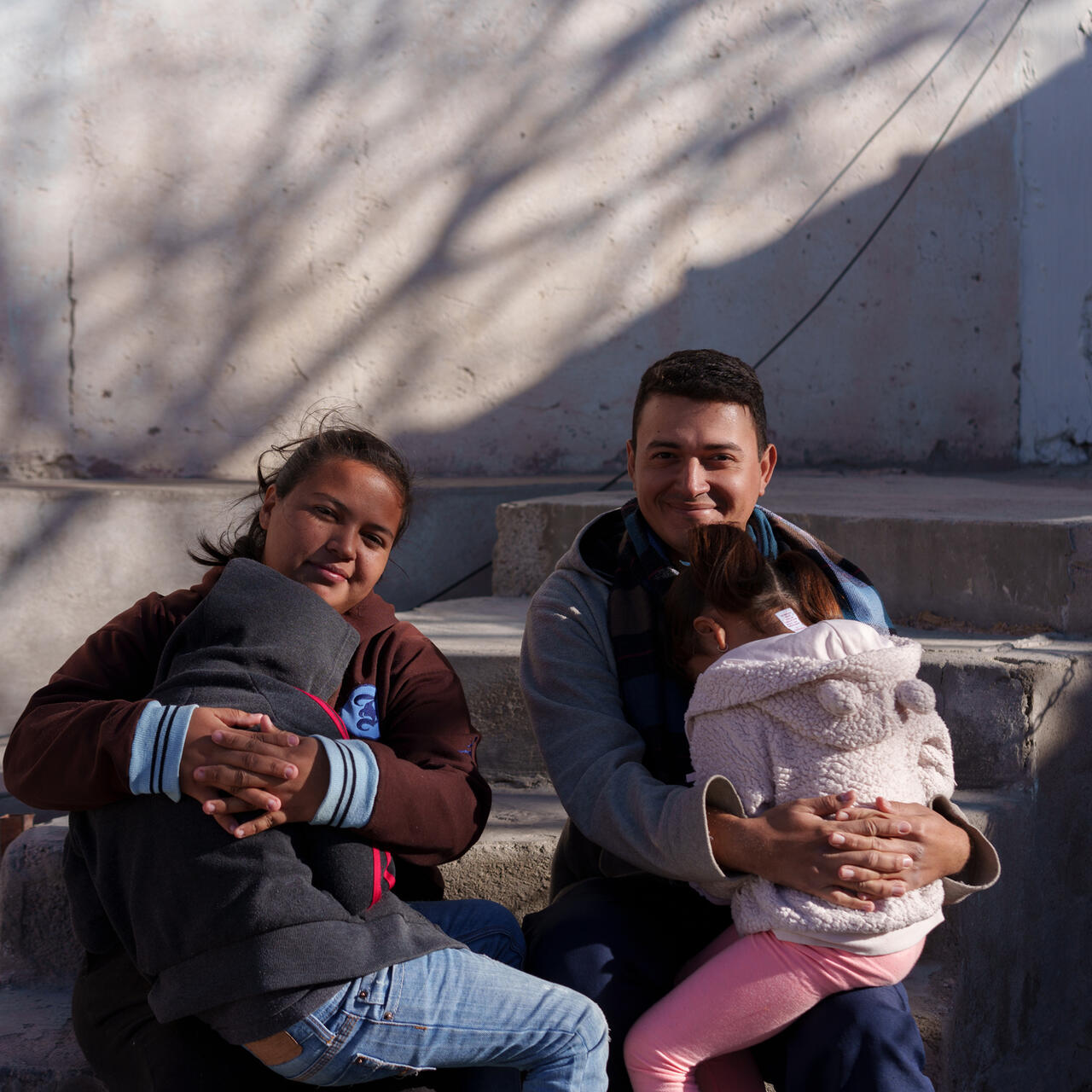
Left in limbo: One family’s grueling journey to find safety in the U.S.
Natalia and José traveled thousands of miles, sleeping rough on the streets, determined to reach a safe place to raise their children.

Natalia and José traveled thousands of miles, sleeping rough on the streets, determined to reach a safe place to raise their children.
Seeking asylum is a human right—but in the United States, a new asylum ban implemented by the Biden Administration will severely restrict asylum seekers from presenting their cases and force vulnerable people to return to unsafe situations.
People like Natalia*, a 22-year-old mother of two from Honduras who has been forced to relocate and start from scratch—several times. Each time, she rebuilt a small business to provide for her family; each time, her dreams were destroyed by new episodes of violence.
In February, Natalia and her partner, José, arrived in Ciudad Juárez, close to the U.S. border, where they spent months trying to get an appointment to present their asylum case. Now, with the new restrictions, many people fleeing violence will be unable to exercise this right at all.
Below, their story.
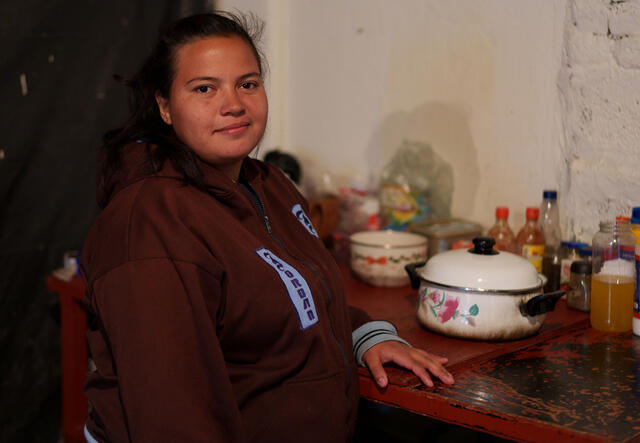
Natalia never imagined herself leaving her hometown in Honduras. “It is very beautiful,” she says. “There are some beautiful rivers, mountains, parks.... People are kind, when one passes, they talk to you. It is a very precious community, honestly.”
She had bright hopes for her family’s future. “I had a business, and my partner worked. We had high hopes for the two of us prospering. We hoped that our children could grow up there, that we could fix our house.” Unfortunately for them, but all too common in their country, Natalia and José were forced to leave after extortion threats from criminal gangs put their lives in danger.
Arriving in a different city in Honduras, Natalia and José started a cybercafé, but it wasn’t long before new criminal groups began bullying them, trying to get them to help with illicit activities. “We did not want to because we are afraid of messing with them and with the authorities,” Natalia explains. “Then they told us to leave—hence, we left.”
The family moved again, only to encounter a similar situation. They fled a third time, to a city where José found work in a factory. Natalia started another small business selling clothes, makeup and sundries from a tent outside their home. “We were doing well, actually…. We organized livestreams on Facebook and that’s how we sold things,” Natalia says.
A little over a month later, yet another criminal gang began extorting Natalia for “protection”—the cost of doing business in Honduras. “We could not raise the money,” she recalls. “Our business had just started, so it wasn’t something stable. [The armed gangs] rule not just one area but control everything...they told us ‘no more,’ and we had to leave.”
Packing up a fourth time, Natalia and José made the painful decision to leave their two children in the care of their grandmother, hoping that this would be safer for the kids than the journey to Mexico.
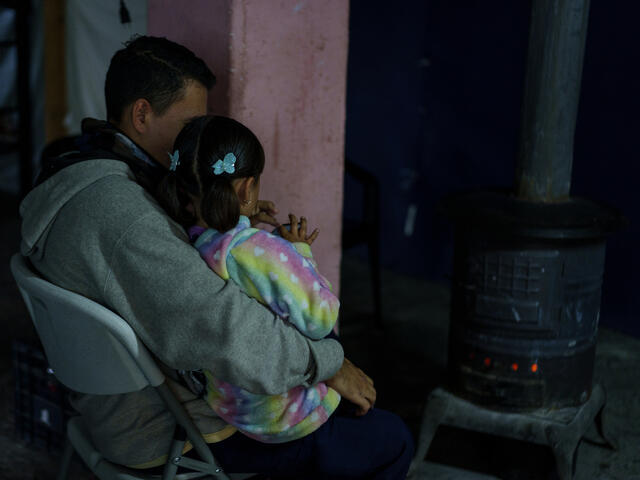
Natalia had been told about organizations in Mexico that could help them get the documentation they would need to stay in the country. Clinging onto a new chance for safety, she and José made their way north, only to find themselves in a grueling situation: working to cover their basic needs and sleeping on the street while they waited for their asylum papers.
After two months, Natalia and José were still without the humanitarian visas that would allow them to continue their journey and find a safer place in Mexico. The wait was filled with misinformation and false hope. They spent 10 days sleeping on the street near the immigration office, enduring the sun, hungry all the time.
Desperate, they decided to travel on to Mexico City, where they met with more frustration, and took one last leap of faith—following advice they found posted on Facebook, they flew to Ciudad Juárez, a border city where they felt they could contact José’s uncle living in the U.S. This, they agreed, was their last chance to provide their children with a future.
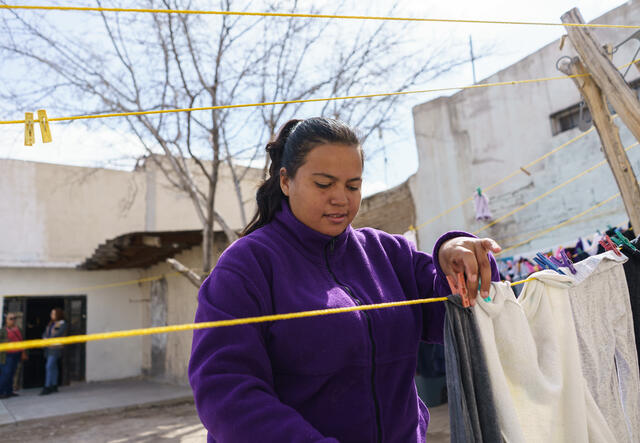
In Ciudad Juárez, Natalia and José were sleeping on the streets once again, until they found space at a temporary shelter. Then the couple began the arduous task of making appointments on an app called CBP One, notoriously dysfunctional despite being designed by a U.S. government agency. Day after day, they tried to secure a time slot, anxious about their precarious living arrangement. Natalia attempted to create a sense of normalcy by cooking and doing laundry in the shelter’s communal spaces. She also joined a group created by an IRC Women’s Protection and Empowerment team, which provided her with a network of friends who offered emotional support.
In April 2023, three months after first arriving in Ciudad Juárez, Natalia finally was able to present her family's case for asylum in the U.S.
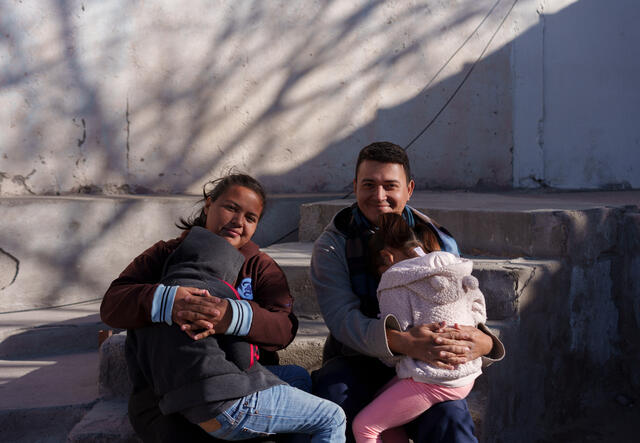
On May 11, 2023, a Trump-era border policy known as Title 42, which allowed the U.S. to rapidly expel people crossing the border, ended. However, a new policy, one that would prevent most asylum seekers from presenting their cases, is taking its place.
The new policy, implemented by President Biden, bars asylum-seekers like Natalia and José, who crossed through another country on their way to the U.S. border, unless they previously had applied for, and been denied, asylum in the country of transit.
All asylum seekers’ whose applications are denied will be required to make an appointment at a U.S. port of entry through the cumbersome and unreliable CBP One. This will leave thousands vulnerable to violence, kidnapping, and extortion in cities like Ciudad Juárez.
The IRC provides critical support to asylum seekers like Natalia and her family on both sides of the U.S. border and along migration routes.
In the United States, the IRC is providing case management, humanitarian reception, information services and legal assistance to over 62,000 asylum seekers, unaccompanied children and other vulnerable people seeking protection.
In Mexico, together with the European Union (EU), the IRC is responding to the needs of people traveling through the main migration corridors; during 2021, we expanded operations and currently are present in Ciudad Juárez, Tijuana, Matamoros, Tapachula, Palenque, Tenosique, Acayucan and Mexico City.
Seeking asylum is legal. No one should be penalized, returned to harm or separated from their children for exercising this right. Write to the White House today to ask the Biden Administration to rescind the asylum ban and uphold its legal obligations to welcome and protect asylum seekers.
Or learn about more ways you can help support refugees and asylum seekers in the U.S.
*Name changed for privacy reasons.